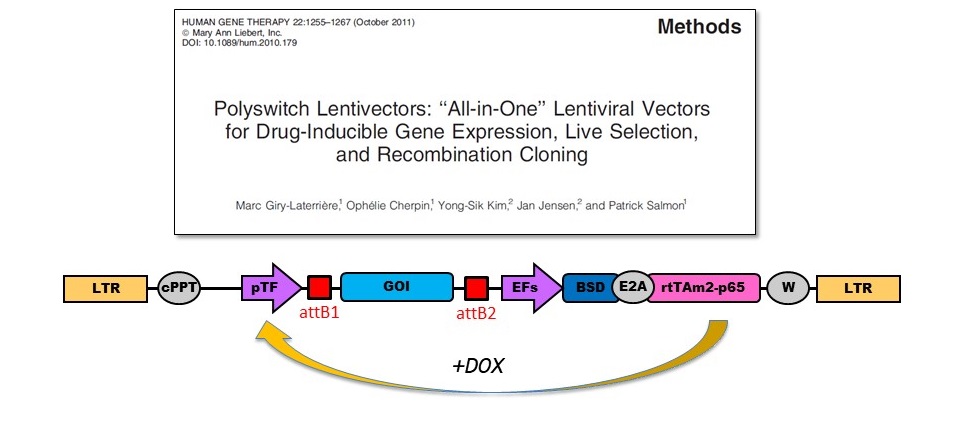Lentivectors
Lentivectors have been first described in 1996. Since then, they are in constant evolution, in terms of efficiency and safety.
In Geneva, since 2005, we have a constant RnD activity to improve lentivectors from their "ancestors" to the next generations in terms of efficiency and user-friendliness. These improvements include in particular: easy cloning using the gateway system, all-in-one auto-inducible lentis with unmatched ON/OFF characteristics, highly efficient microRNA design, and also choice of promoter, living color, selectable marker, etc.
With all these features combined, you can choose the best genetic engineering tools for all Gain-of-Function or Loss-of-Function experiments you need.
For example, if you want to knock-down a gene that is essential for the growth or survival of your cells, you can use one of our All-in-One auto-inducible lentis, transduce and select the transduced cells using GFP or BSD, and then TET-induce expression of our very efficient mirGE microRNA targeting your pet gene.
Lentis with one transcription unit
For single gene expression, you can choose your promoter and your gene of interest (GOI). We have the Lenti-DEST platform (pCLX family). We then choose the pDONRP4P1R (to clone your promoter) and the pDONR221 (to clone your GOI). We run a LR reaction with the 3 plasmids, et voilà !
Lentis with two transcription units
You can choose a DEST-lenti with a living color or a selectable marker to live track or select your transduced cells. Then we incorporate your gene of interest under your promoter of choice (constitutive, tissue-specific or inducible).
Lentis with All-in-One Inducible transcription unit

With an unmatched induced versus basal transcription activity, using a tight TET-promoter (pTF) and an optimized rtTA-p65 transactivator, you can either have it with a BSD selectable marker of with GFP living color. You can read the article here.
Lentis with optimized microRNA

Our published and patented microRNA design (mirGE) has a been optimized to knock down most genes with an unmatched efficiency. You can read all the details by clicking here for the article, or here for the detailed recipe to design your own mirGE.
Lentis with CARs
We are currently developing optimized lentivectors for the rapid cloning and expression of CARs. Ask us if a have a specific project.
